I was a young, enthusiastic, and fit student when I moved to Sydney for University. Little did i know i was about to learn about international distribution channels and fire access paths in Singapore. My grandparents were particularly interested in the enthusiastic and fit aspects. They were manufacturing Grass-Cel® in Sydney already, and had established a relationship with a re-seller in Singapore who loved the product.
“We have some product we need to sent to a client in Singapore, would you like to earn a little money on the weekend and help the team pack it?”.
It seemed like an innocent enough request, until i arrived to find an empty forty foot container parked in the driveway of the factory in Taren Point. Behind that was pallet after pallet of Grass-Cel® Porous Turf Pavers waiting to be loaded. To get the most into a container, we needed to break down the packs and pack individual blocks into the container. It was like a giant game of Tetris. Fueled by chicken rolls and Berts Soft Drinks, we stacked until there was no space left. It wasn’t until we were watching the truck drive away into the sunset that i asked my grandfather what the green hexagon blocks were used for in Singapore.
His response: “High Rise Development, Hotels and Golf Courses.”
By the late 1990s, a new vision had been put forward—that of transforming Singapore into a City in a Garden co-created with the community. With this in mind, from 2000 to 2009, Singapores town planners focused on building “A Liveable and Sustainable City”. This was a paradigm shift in how Singaporeans lived and interacted with their natural environment and with each other. A key realisation was that the liveability of a city is intrinsically linked to its natural ecosystem. With sustainable design in focus, and a recognition of the need for water sensitive design considerations in a monsoonal climate, and a need for fire safety of new developments a market gap emerged.
New high rise developments were required to provide safe perimeter access for the large ladder fire trucks used by the Singapore Civil Defence Force to access high rise buildings. At the time, these were some of the largest and heaviest fire fighting plant in the world. To allow for infiltration of heavy monsoon rains and provide some green space for residents between buildings, Grass-Cel® Porous Turf Pavers were a perfect solution. The hexagonal cell structure and solid base of Grass-Cel® was load tested to hold 26ton per block, and the product was endorsed for use in Fire Engine Accessways.
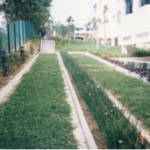
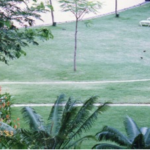
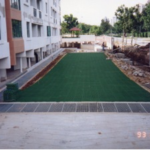
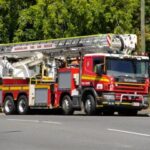
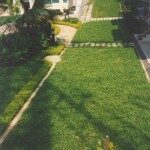
Grass-Cel® as pathways in Hotels and Golf Courses
Golf courses and hotel resorts across Singapore were investing heavily in expansion throughout this period. The period 1990 to 2009 was the biggest investment in golf resorts in the history of the sport. A lot of this expansion was driven by the opening of Changi International Airport in 1981 and subsequent Terminal 2 extension in 1990. With an expanding business trade golf and tourism followed.
Soils in Singapore are predominantly clayey. Regular monsoonal rain keeps the soils moist and constant loading from golf buggies along the courses result in wear and tear on the golf courses which required maintenance. To limit this impact, golf courses and hotels alike turned to Grass-Cel® Porous Turf Pavers as an aesthetically pleasing solution. Grassed pathway maintain the image of a green fairway, but the load bearing cells protect the grass and reduce maintenance. It was a match made in heaven, and a range of hotels and golf courses installed vast areas of Grass-Cel® along their paths.
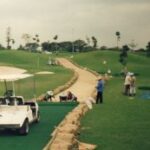
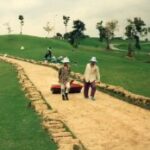

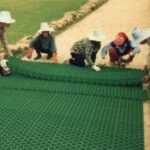
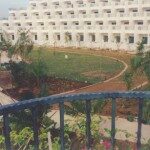
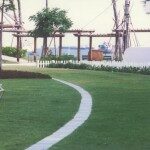
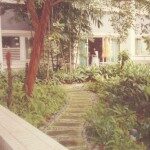
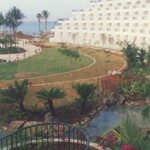
References and Links
- GROUND BREAKING: 60 Years of National Development in Singapore (2019) – Online: Link